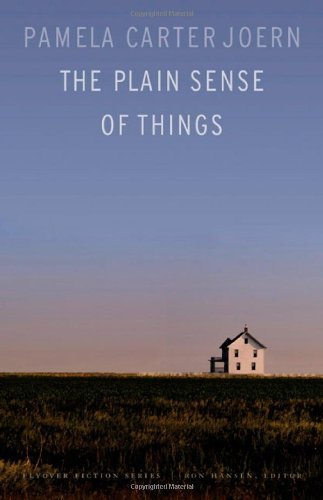The Plain Sense of Things
Joern’s novel is really a series of interwoven short stories, each of which can stand on its own, but taken together they form a deeply intricate picture of the hardscrabble lives of a Nebraska family over the course of three generations. From 1930, when we meet Billy, an orphan in Heartstrong who is unwillingly claimed by his grandfather, to 1979, when we see the adult daughter of one of Billy’s cousins coming to grips with her life and family, it’s difficult not to be drawn in to this world of quiet love, even quieter pain, and life on the plains.
Joern’s writing reflects the times she portrays: it’s stark, spare, and matter-of-fact. There’s no flowery springtime love here, just the cold hard facts of life in a family with not enough money or food and very few dreams. Although the main character of the novel could be said to be the state of Nebraska itself, central to nearly all the stories is Alice, the first one of Billy’s cousins to marry, and the one who most embodies Joern’s themes of self-sufficiency and acceptance. When bad things happen—crops fail, husbands drink, children fight—Alice soldiers on, moving forward slowly in spite of setbacks. Despite the dearth of happy celebrations and successes, there is joy to be found in this family, and on the land they work; those are moments for both the characters and the reader to cherish. As with Joern’s previous novel, The Floor of the Sky, Joern’s writing is evocative and riveting, revealing her deep respect for those who live, and even thrive, on the plains.










